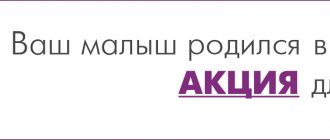Why express breast milk?
There can be many reasons for breast pumping:
- Congestion in the mammary gland, which can lead to mastitis. In this case, pumping is a necessary procedure.
- The baby weaned himself from the breast during the breastfeeding break and does not want to take the breast. Then the mother pumps and feeds the baby breast milk from a bottle.
- The breast is too full, the nipple is tense, the baby cannot latch on. Expressing a little breast milk will help ease the tension and your baby will feed on his own.
- Mom often has to leave for work or school. In this case, expressed milk will be an excellent alternative to adapted formulas.
- Taking medications by the mother leads to a forced break in breastfeeding, and pumping helps maintain lactation.
- Often you have to pump to increase insufficient lactation.
- If your breasts are too full and painful, and you cannot feed your baby, then pumping will help relieve the condition.
All these reasons are quite common, and the pumping procedure really makes life easier for a young mother. The main thing is to know how much and when to express breast milk so that the procedure brings relief and does not aggravate the situation.
Why is this necessary?
If the baby and mother are healthy and are committed to breastfeeding, expressing colostrum after birth is not required. Colostrum is produced in the most optimal quantity, does not burden the baby’s digestive system and increases his strength. Many women wonder whether they express colostrum. This may only be required in the following cases:
- A woman is unable to breastfeed her baby for a certain period after childbirth due to anesthesia after illness or caesarean section. In this case, to start the lactation process, it is necessary to express colostrum.
- The baby was born weak or premature and cannot fully breastfeed. Expressed colostrum is given to him from a spoon or through a pipette.
- For severe neonatal jaundice and phototherapy.
- With special schemes for caring for a low-weight baby.
When and how often should you pump?
The frequency of pumping procedures and the amount of milk received directly depends on the reason:
We recommend reading: Why does your chest hurt when breastfeeding?
- For congestion - once every 1-2 hours. You need to express the amount of milk that will be possible until the compaction decreases. The procedure should last at least half an hour, but no longer, since pumping for too long can injure the mammary gland.
- To increase lactation - after feeding and once or twice in between the child’s meals. The procedure lasts about 10 minutes after feeding and 15 minutes in between.
- To relieve breast fullness, it is enough to express only when discomfort is felt. In this case, you need to express very little milk only until you feel relief, since the more you express, the more milk will arrive next time. In this case, you need to express for no longer than 5 minutes.
- To maintain lactation during a break in breastfeeding, you need to express once every three hours, simulating the baby’s feeding schedule. The amount of expressed milk should be sufficient so that when breastfeeding resumes, the baby is full. The length of each procedure is from 20 to 30 minutes.
- In order to make reserves, it is enough to express several times a day in between the baby’s meals. The time and amount of expressed milk should be chosen so that by the next feeding the breasts have time to fill and the baby does not remain hungry. In this case, everything is individual and depends on the individual woman, the volume of her lactation and the rate of breast filling.
Frequency of pumping
Each situation is individual. The best solution would be to contact a lactation consultant who will develop a special pumping plan and introduce you to the technique of expressing colostrum.
A few recommendations:
- To normalize the lactation process, if the baby after birth for certain reasons cannot suck, you need to start pumping as soon as possible. It is advisable to do this within 6 hours after birth. Initially, it will be a few drops of colostrum, then its amount will gradually increase.
- Next, you need to express the colostrum approximately in the rhythm of the baby applying to the breast. At least every 2-3 hours, including at night. You need to try to have at least 8 pumpings per day.
- If expressing at night is difficult to do, it is possible to take one break every 4-5 hours. But this procedure at night is very important for sufficient milk production. Thus, you need to have at least one pumping session between 2 a.m. and 8 a.m.
- Rare pumping or its absence, if the baby is not latched to the breast, can interfere with the development of the lactation process and provoke insufficient milk formation in the future.
- To maintain the required amount of milk, it is advisable to express at the same rhythm in which the baby suckled the breast or even more often, since no breast pump or manual expression can stimulate the mammary glands as effectively as a baby.
- Regardless of how much time has passed since the last pumping, colostrum should be expressed until a feeling of relief occurs if the woman feels a strong filling of the glands. And this must be done even when the time has not yet come.
- If you cannot pump as often and for as long as planned, it is important to remember that breast stimulation is a manipulation for milk production. Even a few minutes of pumping is much better than nothing. If it is not possible to adhere to a certain rhythm, you need to do this at any opportunity convenient for the woman.
How much milk can you express in one procedure?
It all depends on when mommy pumps. If immediately after feeding, you may not get a drop of valuable liquid. The exception is hyperlactation, when there is too much milk.
Immediately before feeding the baby, you can get 50-100 ml. This portion is enough to fully feed your baby with expressed breast milk. Sometimes even before feeding, mothers cannot strain anything - this indicates an incorrect technique.
Milk is expressed especially well at night, since it is at night that prolactin is produced and is responsible for milk production. Therefore, to replenish supplies, it is better to pump between 2 a.m. and 6 a.m.
The reasons for low pumping may be:
- The baby eats all the milk produced.
- Incorrect hand expression technique or poorly selected breast pump.
- Mom is too tense and can't relax.
- The woman neglects to prepare for pumping and does not wait for the tide.
When can you pump?
Cases when it is necessary to express the breast for the sake of the baby:
- Formation of lactation after childbirth. Immediately after the birth of a child, the breasts are filled with a special substance - colostrum. A newborn needs two sips to be satisfied. Do I need to express colostrum? On the third day, primary milk arrives, which is much thinner than colostrum. The chest literally fills up from the large volume, the baby is not yet able to cope with it. Should I express milk or not in this case? If you do not express, a signal will be sent to the brain indicating a decrease in milk production. This cannot be allowed, because the child will soon get stronger and grow quickly. When lactation begins, the breasts are not fully expressed; the procedure must be stopped when the feeling of fullness goes away and the gland itself becomes soft.
- Insufficient lactation. Is it possible to express milk when there is very little milk coming in anyway? The issue is resolved on an individual basis; there is no clear advice in this situation. If pumping increases production, then this must be done in order to maintain lactation.
- Children born prematurely, with an insufficient sucking reflex or born with a pathology. For such babies, breastfeeding is a difficult task. They are usually bottle-fed with expressed breast milk. Mother's milk is the best medicine for them; they must fight for lactation to the last drop.
- Stagnation, the appearance of the first signs of mastitis. The appearance of a lump in the breast is the first sign that there are problems with breastfeeding. You should knead the compacted lobules and find the cause of lactostasis. Perhaps the mother is putting the baby to the breast incorrectly.
- The need to take medications. In situations where the mother's condition requires constant use of medications, she is forced to express and throw away milk. Almost all drugs overcome natural barriers and pass into breast milk.
- Anatomical features of the breast. We are talking about a flat nipple that is difficult for a child to grasp. For such cases, special pads have been developed. A woman should know how to use them. If the situation does not resolve, then the mother is recommended to pump and bottle feed the baby for the first time.
Basic rules for expressing breast milk
If you follow these rules, pumping procedures will be completely safe and will only bring benefits:
- Pumping your breasts shouldn't hurt! If any painful sensations appear, this indicates an incorrect technique, and pumping must be stopped.
- Before the procedure, be sure to wash your hands with soap and prepare a clean, boiled container for the resulting dairy product.
- In order for pumping to go as quickly and painlessly as possible, you need to induce a flow of milk before it (wash your breasts with warm water, contact the baby, drink a warm drink, lightly massage the mammary glands, give one breast to the baby and express the other at the same time).
- After the milk has arrived, you need to express it by hand or use a special machine. When manually expressing, only the correct technique is important (you can learn more about how to express breast milk by hand in this article). When undergoing a hardware procedure, you should choose the right breast pump and accessories (read more about pumping here).
Massage the mammary glands carefully and gently, in a circular motion, without squeezing them.
Manual expression technique
It is necessary to alternately change the grip of the areola to horizontal and vertical. This type of pumping will be more effective.
The correct position of the fingers when grasping the nipple is indicated by green arrows. Red arrows indicate incorrect grip
Selecting a breast pump funnel according to nipple size
- The pumping process should not be too fast. Do not pull, press or tug on your chest too much. You need to work for 4-5 minutes with each mammary gland alternately.
- If you don’t manage to express the first time, then don’t despair. You need to try again, and soon everything will definitely work out. The main thing is not to be too zealous so as not to damage your breasts.
Expression methods
If the need arises unexpectedly, then manual expression is used.
If you express regularly, it is more convenient to use a breast pump. It can be mechanical or electrical. Using a mechanical one, the mother herself regulates the tempo and force of pressing, while the electric one does everything automatically.
An electric breast pump can be rented at a special point.
Marmet technology
Consultants in maternity hospitals teach this technique to women in labor, explaining how to properly express breast milk with your hands.
It is as follows:
- Sit comfortably with a straight back.
- The thumb is located on the border of the areola of the nipple and the white skin, and the nipple itself is located below.
- The index finger is opposite the thumb, they form the letter “C”.
- The remaining fingers of one hand support the gland. They gently press on the glands, then move their fingers into a ring, squeezing the areola.
- When drops appear, the fingers relax, then the procedure is repeated
Warm bottle method
If the mammary glands are inflamed and swollen, then the “warm bottle” method is used:
- Heat the bottle with boiling water.
- Lubricate the nipple with Vaseline.
- Place the neck of the bottle on the area around the nipple.
- The nipple will retract into the neck and streams of milk will begin to flow out.
- As soon as relief comes, remove the bottle.
Manual Expression Methods
Nipple compression method
- All fingers are placed in a circle on the nipple.
- Press it gently for 2-3 minutes.
- Wait for drops to appear.
Expressing between fingers
- Wash the hands.
- Roll the nipple between your fingers.
- Use your index and middle fingers to gently squeeze the area around the nipple several times.
Do not put too much pressure on the nipple, as this can lead to swelling.
Another hand pumping technique
- You must have clean hands and a clean milk container
- Sit in a secluded, quiet, warm place
- Place your thumb and index finger on the border of the areola
- Press your chest back slightly towards your ribcage.
- Squeeze and roll your fingers from the areola to the base of the nipple
Short but frequent pumping stimulates lactation better than long and infrequent pumping
How to express breast milk with a breast pump
A breast pump is a device that allows you to express milk effortlessly and much faster. Techniques for using the device:
The use of a breast pump is indicated for mothers with abundant milk secretion and women with sensitive breasts. The process is painless and can be carried out in almost any conditions.
- The bottle and parts of the device must be sterilized.
- Apply lanolin to the nipple to avoid injury.
- Place the nipple into the funnel of the device. Only the nipple should be in the funnel without additional areas.
- Select the lowest vacuum mode, gradually increasing it until it is comfortable. Don't wait for painful sensations.
- Squeeze the device bulb rhythmically to ensure milk flows into the bottle.
- If the device is electric, then adjust the strength of its operation.
How to pump your breasts for the first time
The first pumping will have to be done in the maternity hospital. Most likely, lactation will be abundant, and a newborn baby will not be able to eat so much milk. Pumping will help avoid congestion. Decantation is also necessary to relieve tension that prevents the baby from latching on to the nipple.
Basic principles:
- Don't panic or worry.
- Perform the very first procedure under the supervision of a nurse to ensure proper technique.
- Listen carefully to your feelings. There shouldn't be any pain.
- Express milk only until relief occurs, so as not to increase lactation even more.
When does it make sense to pump?
- Forced separation from a child. If a nursing mother is busy studying, at work or is sick, then in order for lactation to continue, she must regularly express milk and feed her baby from a bottle.
- Expressing milk for long-term storage in the refrigerator. In cases where the mother faces a long course of medication or is forced to stop breastfeeding for some reason, it makes sense to express milk and freeze it in the refrigerator. Breast milk is a very valuable product for a child, important for his normal health and development.
How to express breasts during mastitis or congestion
Should I express my breasts during congestion and mastitis? Of course, pump! This is the main prevention and treatment of such conditions. Sometimes a mother can only get by with breastfeeding, but often even the child cannot resolve lactostasis. There are several features of the pumping procedure for mastitis and congestion:
- It is necessary to determine where exactly the seals have formed. This is usually felt immediately, but you can gently palpate the mammary glands to be sure.
- Before pumping, you need to lightly massage your breasts or take a warm shower. Water pressure and massage with light pats should be directed exactly where stagnation has occurred.
- Do not try to crush or knead the cones: this is extremely dangerous! Everything needs to be done as carefully as possible.
- If you have purulent mastitis, you should not heat your breasts!
- During the pumping process, direct your efforts to those lobes of the mammary glands where congestion has formed.
- Under no circumstances should you press on the place of stagnation!
If you follow these rules, pumping will be as painless as possible, and the unpleasant phenomenon of mastitis or congestion will gradually disappear.
If milk stagnation does occur, what should you do at home? Step-by-step instruction
Step 1.
First of all, don't panic. Stress reactions and tension impair milk flow. You need to relax as much as possible to stimulate the oxytocin reflex. Therefore, walking with a baby and a stroller is bad for you now, but bed rest is good.
Drinking a warm drink immediately before feeding or pumping is very helpful for relaxation. You can also apply a heating pad to the collar area.
Step 2.
The most effective measure is to put the baby to the sore breast more often. Often points 1+2 are enough to solve the problem, but if that doesn’t help, read on:
Massage during stagnation of milk should be done according to the movement of lymph: from the areola to the armpits and collarbones.
Step 3.
Perhaps in your situation you need to improve your application as much as possible, contact a consultant to correct it. If there is no possibility of an in-person consultation, find someone who can advise you using photos and videos. If it is impossible to get such help quickly, at least feed in different positions. For lactostasis and mastitis, it sometimes helps to turn the baby with his chin towards the seal. I also recommend reading my article “Proper breastfeeding” (link at the end of the text).
Step 4.
Apply cold to the sore area after feeding. For example, a towel soaked in ice water. You can throw ice in a deep bowl and cool the compress as it warms up from the skin. Cold should be applied regularly after each feeding from the sore breast for 7-15 minutes. It helps eliminate swelling in the breast tissue. Swelling often additionally blocks stagnant milk.
Step 5.
Breast massage during milk stagnation is also a very good decongestant measure! It should be done from the areola to the nearest large lymph nodes: the armpits and collarbones. Using light circular or stroking movements, and without pressing on the mammary gland with great force!
Step 6.
Stimulating the movement of lymph helps to effectively eliminate milk stagnation or quickly remove residual symptoms. For example, elements of lymphatic drainage massage: kneading the collar area and shoulders, warming rubbing under the collarbones and in the armpit.
During the consultation, I also give so-called “lymphatic exercises.” This set of exercises was started by Anna Osipyan, one of the first consultants with the international IBCLC certificate in Russia:
1. Hands folded at the chest in a “praying” or “namaste” position - a greeting from yoga. The palms press hard on each other so that tension is felt in the armpits. 2. Hands in a “lock” behind your back. Rock the “lock” up and down. 3. Using the thumb and index finger of either hand, we feel the pits between the ribs, where they are attached to the sternum. We massage the pits in a circular motion, moving down from the upper ribs to the lower ones. Then repeat with the other hand. 4. Clench your hands into fists and rub the ribs at the sternum up and down with your middle phalanges.
- The hands are folded at the chest in a “praying” position or “namaste” - a greeting from yoga. The palms press hard on each other so that tension is felt in the armpits.
- Rotate your shoulders.
- We stretch the lateral surfaces of the body: we stretch our right hand up, above our heads, and to the left, in turn, so that we feel the muscles stretching on the right side of the thigh. The same with the left hand.
- We place the ribs of the palms under the lower ribs and rub them.
- We place our palms under the lower ribs and, with an exhalation, lightly plunge them into the stomach. With each exhalation, we move deeper as far as possible, tilting the body forward.
- Throw your hand behind your head and pat your armpit.
- We place the ribs of the palms under the lower ribs and rub them.
- Throw your hand behind your head and pat your armpit.
5. Rotate your shoulders.
6. Stretch the lateral surfaces of the body: we stretch our right hand upward, above our head and to the left, in turn, so that we feel the muscles stretching on the right side of the thigh. The same with the left hand. 7. Place the ribs of the palms under the lower ribs and rub them. 8. Put your hand behind your head and pat your armpit. 9. This exercise should be done while sitting (on a chair or cross-legged on the floor). Place your palm under the ribs, with the back side facing the body. Fingers point vertically upward. We inhale, and as we exhale, we gently lower ourselves, plunging our fingertips under our ribs. New breath - we stop. New exhalation - down again.You can go lower and lower until you feel the first pain. When they occur, make a slight rocking vibration with your fingers. The main thing is not to overdo it and work in your comfort zone. You can avoid pain completely.
Having done the exercise closer to the center, we move our fingers further away from each other. We move them to the sides as many times as necessary to work the entire hypochondrium area.
9. We place our fingers under the lower ribs and, with an exhalation, lightly plunge them into the stomach.
With each exhalation we move deeper, tilting the body forward. It is better to do gymnastics while standing. At high temperatures it is better to refrain. Contraindicated for cancer!
Step 7
Practice shows that Traumeel-s ointment can help, especially in cases where redness and fever appear. However, there are no studies confirming the effectiveness of this drug. On the first day, it is enough to apply the ointment to the sore area 4 times, and then 2 times a day.
Is it necessary to express “stone” breasts?
Often in the first days after childbirth, you can observe the phenomenon of “stone” breasts. The mammary gland is hard and tense, there is swelling, the nipple is retracted or flat. Many experts believe that this is normal, the baby will suck at the breast, and the phenomenon will go away on its own. But in practice, a newborn cannot even latch onto the nipple to start eating. As a result, the baby is hungry, and the mother suffers from heaviness and discomfort.
Signs of a “stone” breast. She is shown on the right in the picture
Pumping will help you get rid of “stone” breasts. There are several rules:
- A breast pump will not help in this case. First you need to work on the nipple to give it the desired shape.
- Then you can start pumping. The milk will drip out in drops, this is a sign that the ducts have not yet developed.
- If you don't succeed right away, you need to try again. You can’t leave things halfway, as stagnation may form.
- You can try this method: grab the breast at the base with both hands and slightly pull forward towards the nipple. This will make milk flow easier.
- After expressing some milk, you can offer the breast to your baby. If the nipple is formed and the main tension is gone, then the baby will cope on its own.
Nipple shaping
When is pumping necessary?
There are situations when pumping is a mandatory procedure, without which further natural feeding is impossible:
- In cases of hyperlactation, when the baby cannot cope with the incoming amount of mother's milk. Such situations are not uncommon in the first days after the arrival of colostrum: the glands fill at a high speed, and the newborn does not need as much food. Then the woman expresses until she feels relieved, until she becomes soft.
- In cases where the first hours after birth, mother and baby are separated. The woman in labor expresses her colostrum, and medical staff feeds the baby from a syringe or spoon. On the first day, the newborn eats drops of colostrum and does not need additional feeding.
- In cases of congestion, to avoid the risk of lactostasis, mastitis and surgical interventions
- In cases of a woman’s illness, when the medications taken are not compatible with breastfeeding. While the mother is undergoing treatment, the baby is fed frozen milk (if it was prepared in advance) or formula. During this period, the woman pumps so that lactation does not fade, and after recovery she returns the child to breastfeeding.
- In cases of prolonged absence of the mother. As a rule, such moments are discussed in advance, so the woman needs to freeze as many portions as possible for her child. During separation, the baby feeds defrosted, and the mother pumps during feeding hours.
- In cases of mother's milk donation.
Conditions for expressing
Prerequisites
- the baby was born a few weeks early and is in the process of recovery;
- the newborn was diagnosed with central nervous system disorders and a weak sucking reflex;
- inflammatory processes in the mother.
Optional Terms
- if the feeding regime has not been established: in this case, the child himself will establish the required amount of nutrition by regular sucking;
- when there is a feeling that the glands are empty and there is no milk in them: with established breastfeeding, it comes on demand at the time of feeding.
How to feed your baby expressed milk
In order to feed your baby expressed breast milk, it must be heated to a temperature of 36 degrees. If the milk has been in the refrigerator, then it is heated in hot water, in a water bath or in special electric heaters.
Frozen milk must be taken out and placed in the refrigerator so that it takes on a liquid form. After this, it is heated as described above.
Experts do not recommend using microwave ovens to heat milk, as microwaves destroy its structure and destroy many beneficial substances.
During storage, milk may separate into fractions, then before drinking you need to shake the bottle several times, and it will return to its original form.
When milk is taken out of the freezer or refrigerator, it must be used all at once. Remains must be thrown away
How and for how long can expressed breast milk be stored?
Expressed milk is stored in several ways:
- At room temperature. The maximum shelf life outside the refrigerator is 4 hours. It is better if the child drinks fresh milk within 1-2 hours after pumping.
- Refrigerated in a bottle or sterile container. It is preferable to use milk for 24 hours, but storage up to 4 days is allowed.
- In the freezer in special freezing bags. GM can be kept in the freezer for up to 3 months. In a cell with a separate door, the terms increase to six months.
- In a cooler bag. A convenient option for short trips. Containers are stored in ice packs for 24 hours.
Milk can be stored at room temperature for no more than 3-4 hours. Milk can be stored in a refrigerator for up to 4 days, and in a freezer (temperature no more than -18°C) for up to six months.
Freezing breast milk
If a woman knows that in the future she will have to be away from the child for some time and miss feeding hours, then it is necessary to create a “GM bank”. To do this, the mother pumps little by little throughout the day and collects the milk in bags for freezing.
These are disposable plastic containers with a printed volume scale and a fixed clasp. The bags are attached directly to the breast pump, which means that germs and air will not get into it.
Packages for freezing are signed, the date is recorded (there are special stickers for this) and placed in the freezer on a separate shelf.
Store containers at the back wall, where the temperature is constant. If the freezer has a separate door from the refrigerator, then the shelf life is longer.
In addition to bags, sterile glass containers and disposable containers for testing are also used.
Milk can be frozen in stages. During the day, it is allowed to take several servings into one container.
Milk that is frozen immediately has a longer shelf life.
How to tell if milk has gone bad
Although breast milk has antibacterial properties, it can spoil if not stored properly. Signs of spoiled breast milk:
- rancid smell;
- sour taste.
A fishy or soapy smell does not mean the milk is unsuitable. This fact is influenced by the increased amount of lipase enzyme, which is designed to break down fats in milk.
If the milk smells fishy, then the mother should temporarily give up flaxseed oil and seafood (for example, anchovies), drink purified water and take antioxidants.
Rules for defrosting and heating milk
Principles of feeding frozen milk:
- Place the freezer bag in the refrigerator overnight. In the morning, heat in a water bath and feed the baby. Do not use a microwave oven for heating.
- If you don’t have time to defrost, then immediately heat it in a water bath. Pour into a sterile bottle or use a disposable syringe without a needle. Breastfeeding experts suggest using the second option, which reduces the risk of breastfeeding when sucking on a bottle.
- If the milk has already been heated, but for some reason the child has not eaten this portion, then it can be used within 3-5 hours.
- If the child has not finished eating after 3-5, then the leftovers must be thrown away.
- Thawed milk can be stored in the refrigerator for no more than a day.
Breast milk is the nutrition every baby needs. Even in critical situations, lactation can be maintained by putting into practice the recommendations of certified breastfeeding consultants.
Is it possible to mix milk expressed at different times?
The ideal option is to express each time into a separate container, but if this is not possible, then you can mix the expressed milk, following a few rules:
- Collect and mix expressed milk for one day only.
- Each portion should be expressed into a separate container and then cooled in the refrigerator to the same temperature.
- Do not mix breast milk of different temperatures!
Many experts generally do not advise mixing milk expressed at different times, since the composition and taste of the liquid is different each time. When mixed, the taste may change unpredictably, the child will simply refuse to drink it, and all the work will be lost. Therefore, mixing is a necessary measure that should be avoided if possible.
Pumping is not difficult at all. If you follow simple rules, this procedure will be an excellent assistant during breastfeeding.
Successful lactation
Recommendations for postpartum baby care change every year. The 24-hour stay together of the mother and the baby is a modern trend, instead of the outdated policy when the child was taken to a separate room and brought in only for feeding.
Once upon a time, our mothers put their babies to their breasts every three hours. Now feeding on demand is being promoted.
It is also not relevant to express colostrum and milk at the beginning of feeding and total emptying after it. Thus, the secretion will be produced even more than it was and what the child needs.
Should I express colostrum after feeding? This is important when there are lumps in the chest, pain and a feeling of heaviness. You need to express a little of the remaining colostrum or milk until you feel relief, but not “to the last drop.” Gradually, lactation will improve, and fluid will be produced according to the baby’s needs.
Draining colostrum or milk is important for working mothers. The breast pump collects the food and places it in the refrigerator. At the baby's request, the nanny warms it up and feeds it from a bottle.
It is important to remember that breast milk is unique, irreplaceable and the only food product for a newborn. There are a lot of advertisements around for dry feeding formulas, which are cow's milk mixed with oils, vitamins, microelements and other biological additives. No formula can replace breast milk, no matter what is written on the packaging.
Dry formulas are not a sterile product and may contain 13 dangerous bacteria, which, if preparation or storage conditions are violated, can cause serious illness or even death of the child.
Breastfed children are less susceptible to respiratory diseases, ear and urinary tract infections, early onset diabetes and asthma. Such babies tolerate vaccination better, have fewer cases of caries and have better vision.
Women who breastfeed are less prone to anemia, osteoporosis, breast and ovarian cancer.
Frequency of expressing by hand or with a breast pump - is there a difference?
Modern pumping devices allow you to empty your breasts quickly and comfortably. Electric breast pumps tend to work more efficiently. Expressing only takes 3-7 minutes. With your hands you can get several times less milk in such a period of time. Therefore, the frequency of pumping, as well as the procedure time, differs when using a breast pump or without it.
- With the help of an electric breast pump, the breasts are emptied more efficiently and quickly. If you carry out procedures frequently, you can get hyperlactation. Therefore, it is recommended to use an electric breast pump no more than once every 4 hours, and the procedure should last no more than 15 minutes.
- When using a manual breast pump, the manipulation becomes more complicated. It is recommended to empty your breasts once every 3-4 hours. If there is no need to increase the volume of milk, you cannot express until the last drop.
- Expressing by hand is more difficult. If a one-time emptying of the breast is required (for example, with lactostasis or for short-term separation from the baby), you can do without a breast pump. If you need to constantly get milk, it will be more difficult. You will have to express every 2-3 hours for 20-30 minutes.
Women with established lactation do not need additional pumping. The main task of breast milk is to satiate the baby. If the baby is alert, healthy, gaining weight well and actively suckling, then there is no need to express.











